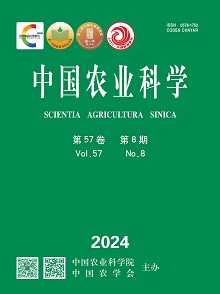【Objective】The objectives of the present paper were to understand current status of fertilizer utilization efficiency of wheat and maize in Xinjiang, to optimize their nutrient management, and to improve fertilizer utilization efficiency, so as to provide basic data and technique support for the food security of Xinjiang and as well as all the country. 【Method】72 field trials (40 for wheat and 32 for maize) were carried out in main grain growing areas of Xinjiang from 2018 to 2020. Four different treatments of fertilizer application were designed, including nitrogen, phosphorus and potassium (NPK), no nitrogen (PK), no phosphorus (NK), and no potassium (NP). Each experiment was conducted in triplicate. Then, the nutrient uptake of main grain crops, the response of nitrogen, phosphorus, and potassium fertilizers, the agronomic efficiency, the utilization rate and other parameters were examined under the current conditions of fertilization for agricultural production in Xinjiang. 【Result】(1) The average application amounts of N, P and K fertilizers for wheat in Xinjiang were 233.1 kg N·hm-2, 128.0 kg P2O5·hm-2 and 75.5 kg K2O·hm-2, respectively; the average application amounts of N, P and K fertilizers for maize were 254.9 kg N·hm-2, 148.0 kg P2O5·hm-2 and 67.8 kg K2O·hm-2, respectively. (2) The wheat yield of per unit area was 7 505 kg·hm-2 under NPK treatment, and the yield responses of N, P and K fertilizers were 2 206 kg·hm-2 (500-3 795 kg·hm-2), 2016 kg·hm-2 (288-4 230 kg·hm-2), and 1 362 kg·hm-2 (105-2 910 kg·hm-2), respectively. The average rates of yield increase for N, P and K fertilizers were 45.0%, 39.7% and 23.0%, respectively. The yield per unit area of maize under NPK treatment was 13 715 kg·hm-2, and the yield responses of N, P and K fertilizers were 4 657 kg·hm-2 (1 559-6 900 kg·hm-2), 1 942 kg·hm-2 (473-4 699 kg·hm-2), and 1 297 kg·hm-2 (113-5 440 kg·hm-2), respectively. The average rates of yield increase for N, P and K fertilizers were 52.2%, 21.2%, and 15.5%, respectively. (3) The uptakes of N and K by wheat and maize were relatively large, whereas the uptake of phosphorus was relatively small. The application of chemical fertilizers could significantly promote the uptake of nitrogen, phosphorus and potassium by plants, and increase the accumulation of nitrogen, phosphorus and potassium in soil. For NPK treatment, it required 2.7 kg (1.7-4.0 kg) of nitrogen (N), 0.8 kg (0.4-1.3 kg) of phosphorus (P2O5), and 2.1 kg (1.2-3.9 kg) of potassium (K2O) to form 100 kg of grains for wheat; for maize using the NPK treatment, it required 2.1 kg (1.5-2.9 kg) of nitrogen (N), 0.8 kg (0.4-1.2 kg) phosphorus (P2O5), and 2.1 kg (0.7-3.4 kg) of potassium (K2O) to form 100 kg of grains. (4) The agronomic efficiency of nitrogen fertilizer for maize was higher than that of wheat. There were no significant differences in the agronomic efficiencies of phosphorus and potassium fertilizers. The agronomic efficiencies of N, P and K fertilizers for wheat were 9.6, 15.9 and 18.7 kg·kg-1, respectively. Therefore, the agronomic efficiencies of P and K fertilizers were significantly higher than that of nitrogen fertilizer. The agronomic efficiencies of nitrogen, phosphorus, and potassium fertilizers for maize were 18.7, 13.4 and 18.1 kg·kg-1, respectively, N and K fertilizers were significantly higher than P fertilizer. (5) The utilization rates of N, P and K fertilizers for wheat were 41.4%, 21.8% and 45.2%, respectively. The utilization rates of N, P and K fertilizers for maize were 46.9%, 20.5% and 49.6%, respectively. The N and K utilization efficiency for wheat and maize were significantly higher than that of P. 【Conclusion】To date, the yield of wheat and maize in Xinjiang was high, the utilization efficiency of nitrogen, phosphorus and potassium was at a high level, and the utilization efficiency of nitrogen and potassium was significantly higher than that of phosphorus. In Xinjiang, wheat and maize yield was most sensitive to nitrogen deficiency. The phosphorus deficiency had lower influence on the wheat and maize yield, and the potassium deficiency had the lowest reduction. The amount of nitrogen application applied to wheat and maize in Xinjiang was reasonable. In contrast, the amount of potassium application was seriously insufficient. The excessive application of phosphate in wheat existed. In the future, it was necessary to increase the input of potassium fertilizer for wheat and maize and to reduce the input of phosphorus fertilizer for wheat.











